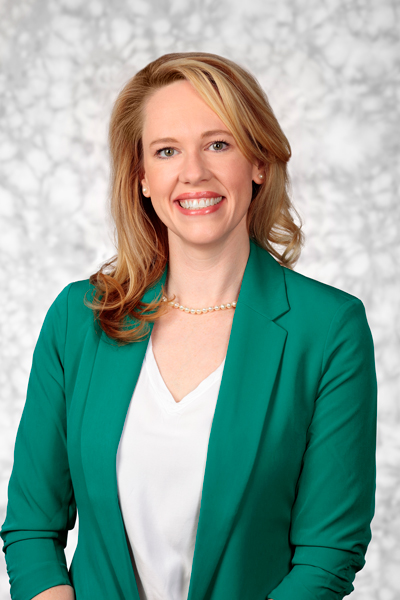|
Getting your Trinity Audio player ready...
|
Natasha Cogdill, vice president of compliance at Community Medical Centers (CMC), has a saying about her position. “I tell people that you can invite compliance to the table in the beginning, or we may have to invite ourselves in at the end,” Cogdill says, laughing. Her advice isn’t that of a lifelong compliance expert, it’s from an RN, a nurse practitioner, an initially reluctant manager, and now a compliance executive who has seen virtually all sides of the caregiving experience.
Cogdill knows the talk may be tough, but it’s precisely because she’s worked adamantly to make the compliance office at CMC one of partnership and advocacy. She has seen the good work that can be undone by not including all vital parties in the conversation, and she is committed to making sure the compliance team is there early and often to ensure the organization’s patients receive the best care and that claims for services provided are accurate.

“I think that many times, the people that resist leading the most tend to do the best,” the VP says. If based only on that maxim, Cogdill was born to lead. The nurse and nurse practitioner was used to being in the middle of high-stakes situations. She built out experience in the inpatient and outpatient settings, including cardiovascular, oncology, and surgical settings, all the while continuing her education. Her transition to management that would eventually lead her to compliance was unexpected, to say the least.
“In my head, I was going to be a nurse and then a chief nursing officer, just like that,” Cogdill remembers, snapping her fingers. “I had said many times that I would never, ever work in middle management and certainly never thought I would work in compliance!”
But after being talked into what she thought was a temporary management position, Cogdill fell in love. She was managing five departments at once and was enamored at the impact she was able to have in such a short period of time. “I loved process improvement,” the VP explains.
“I liked taking on a challenge and learned to never underestimate an unexpected opportunity. You can do so much good work and learn so much from it.”
She found herself being shepherded to new departments, making valuable changes, and moving to the next one.
“I missed taking care of patients, but I found that the better you take care of your staff, the better care your patients are going to receive,” Cogdill says. “We had a fantastic employee retention rate and built collaborative relationships with other departments. I knew that nursing management would be my future, so I began looking for directorship within the organization.”
The chief audit, enterprise risk management, privacy, information security, and ethics and compliance officer for CMC had taken note of a large coding and billing reorganization Cogdill had undertaken within one of her department and offered her a position within the compliance office. Had the call come minutes later, Cogdill would have accepted a separate offer that came in moments after she hung up. “Whether you believe in fate or divine intervention, that call came at the exact moment it needed to. It helped me discover what I believe I will dedicate the remainder of my professional career to.”
“I’m grateful to be able to speak for and understand both sides of healthcare. . . . us clinical folks have to learn [the financial side’s] world and start speaking their language.”
Cogdill spent the night before starting her new role pouring over the Inspector General’s Office compliance program guidance documents. “I was a little terrified—OK, significantly terrified. What was I thinking taking this position?” she reflects. “But since day one, I’ve never looked back.”
Cogdill has spent extensive time working to be an effective interpreter between the clinical and financial sides of the organization. “I’m grateful to be able to speak for and understand both sides of healthcare,” she says. “You can’t expect the financial side to go back to school and become nurses in order for them to understand the clinical considerations, so that means us clinical folks have to learn their world and start speaking their language.” So Cogdill did that, and learned coding, billing, and documentation rules, regulations, and guidelines.
The financial side, especially in terms of governmental payer rules and regulations, Cogdill says, can be immediately overwhelming to the clinical side whose primary focus is that of patient care. Regulations need to be explained in terms that are relevant to the care clinicians provide at the bedside not solely focused on the bottom line. When the entire team is able to be on the same page, defenses go down, barriers disappear, and all parties can be heard. That’s when great things happen.
That ambassadorship applies to more than just Cogdill—it goes for the whole office. “I think a lot of misconceptions attributed to any compliance department may come from a lack of transparency or fear of retribution,” the VP explains. “I want people to understand that we [the compliance team] know you want to do the right thing. We also want to do the right thing. So let’s start there and work together to accomplish our organization’s mission and vision.”
Especially in healthcare, the idea of “ask for forgiveness, not permission” just doesn’t fly. And while compliance may tell you things you don’t want (or like) to hear, Cogdill can guarantee two things. Her office knows that, no matter what, timely feedback is to be expected whenever a question is asked or a concern is voiced. Second, allowing compliance to the table earlier will ensure less issues later on.
Cogdill says the compliance team has already been more effective in assisting departments who need more staff for essential work, and that the office will help others go to bat for resources they need if the case makes sense. Cogdill’s résumé is proof enough. As someone used to taking the wheel of any situation, her focus and commitment to always doing the right thing for patients, the organization, and the community starts with saving compliance a seat at the table.

